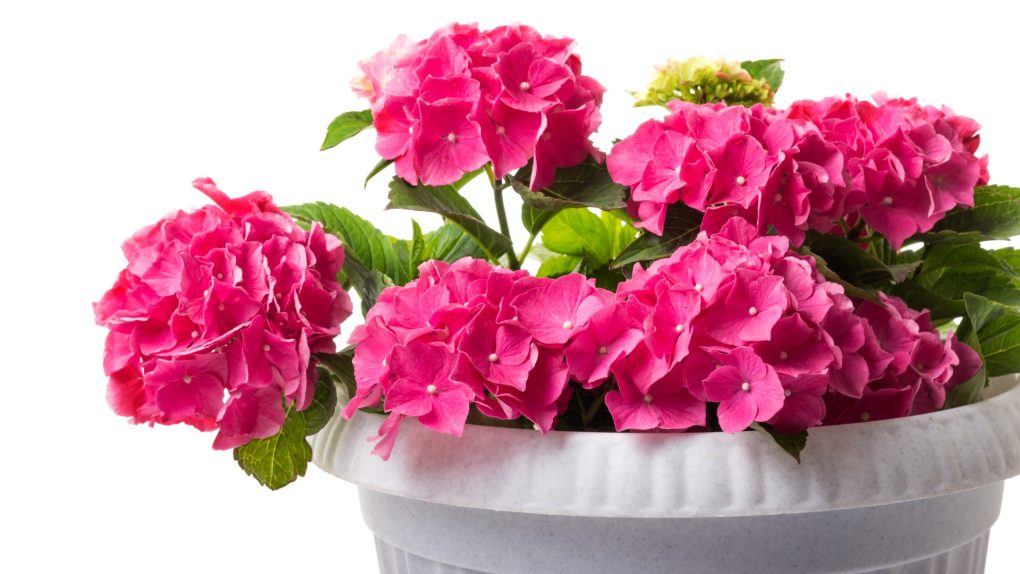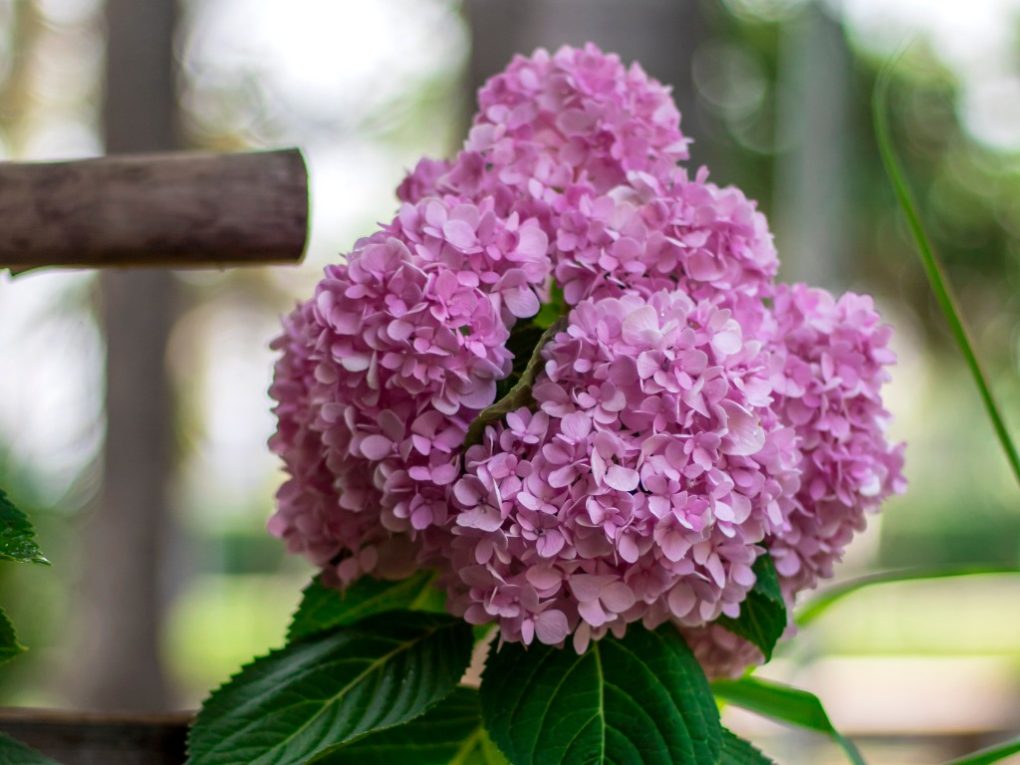What Hydrangeas Stay Small? A Guide to Compact Varieties
Hydrangeas that stay small are typically dwarf varieties, like the “Pia” (Hydrangea macrophylla “Pia”) and “Bobo” (Hydrangea paniculata “Little Quick Fire”) cultivars. These compact plants maintain a smaller size, making them perfect for gardens with limited space or for planting in containers.

Dwarf hydrangeas like “Pia” typically grow up to 2 – 3 feet tall and wide, while the “Bobo” variety can reach 3 – 4 feet in height and spread. These plants offer abundant, long-lasting blooms, similar to their larger counterparts, and still require proper care regarding sunlight, soil, and water for optimal growth.
Table of Contents
7 Compact Hydrangea Varieties
Hydrangeas are beloved flowering shrubs that add beauty and color to any garden. While some hydrangeas can grow quite large, compact varieties are also available that are perfect for smaller gardens or container planting. These compact hydrangeas offer all the charm and beauty of their larger counterparts while staying small and manageable. Here are seven delightful compact hydrangea varieties to consider for your garden:
1. Pia Hydrangea

The ‘Pia’ hydrangea is a charming dwarf variety ideal for small spaces or container gardening. Its compact size makes it a great choice for border planting or as a focal point in a mixed perennial bed. The ‘Pia’ hydrangea produces stunning flower heads in shades of pink or blue, depending on the soil’s acidity. Its lush green foliage adds beauty even when the blooms are not in season.
● Size: 2 to 3 feet tall and wide
● Flower Color: Pink or blue, depending on soil acidity
● Notable Feature: Large, round flower heads
2. Bella Anna Hydrangea

The ‘Bella Anna’ hydrangea is a compact and showy variety with vibrant flower clusters that bloom from summer to fall. Its stunning deep pink or magenta blossoms are a sight to behold and can last for weeks. They add color to gardens of all types. The ‘Bella Anna’ hydrangea thrives in partial shade and well-draining soil, making it an excellent choice for smaller gardens or as a container plant.
● Size: 2 to 3 feet tall and wide
● Flower Color: Deep pink or magenta
● Notable Feature: Long-lasting blooms
3. Bobo Hydrangea

The ‘Bobo’ hydrangea is a compact and hardy variety that produces abundant beautiful white flowers. Its cone-shaped flower heads start as a creamy white and gradually turn pure white as they mature. The ‘Bobo’ hydrangea blooms from summer to fall, attracting butterflies and pollinators to your garden. Its compact size and attractive foliage make it an excellent choice for borders, hedges, or as a standalone specimen.
● Size: 2 to 3 feet tall and wide
● Flower Color: White
● Notable Feature: Abundant and cone-shaped flowers
4. Little Lime Hydrangea

The ‘Little Lime’ hydrangea is a smaller version of the popular ‘Limelight’ hydrangea. It features the same stunning lime-green flower heads that turn pink in acidic soil. The ‘Little Lime’ hydrangea has a compact form that fits well in smaller gardens or as a focal point in a mixed border. Its sturdy stems and large flower heads make it an eye-catching addition to any landscape.
● Size: 3 to 5 feet tall and wide
● Flower Color: Green or pink, depending on soil acidity
● Notable Feature: Compact form with large flower heads
5. Cityline Series Hydrangea

The ‘Cityline’ series of hydrangeas includes several compact varieties, each with its unique flower color. Some notable members of this series are ‘Cityline Paris’ (pink blooms), ‘Cityline Mars’ (red blooms), and ‘Cityline Vienna’ (blue blooms). These compact hydrangeas are perfect for urban gardens, small spaces, or container planting. They offer a profusion of flowers and add a touch of elegance to any landscape.
● Size: 2 to 3 feet tall and wide
● Flower Color: Various colors, including pink, blue, and red
● Notable Feature: Compact size with prolific blooms
6. Endless Summer Hydrangea

The ‘Endless Summer – Bloomstruck’ hydrangea is a compact variety known for producing flowers on both old and new wood, ensuring continuous blooms throughout the summer. Dark green foliage enhances its beautiful pink or blue flowers, creating an eye-catching display in any garden. This hydrangea thrives in partial shade and moist, well-draining soil, making it an excellent choice for small gardens or as a container plant.
● Size: 3 to 4 feet tall and wide
● Flower Color: Pink or blue, depending on soil acidity
● Notable Feature: Reblooming flowers
7. Fire Light Tidbit Hydrangea

The ‘Fire Light Tidbit’ hydrangea is a compact variety with a stunning display of color-changing blooms. The flowers start white, turn pink, and eventually mature into a deep red hue. This color progression creates a captivating visual effect in the garden. The ‘Fire Light Tidbit’ hydrangea is well-suited for smaller landscapes or as a container plant, adding beauty and interest throughout the growing season.
● Size: 3 to 4 feet tall and wide
● Flower Color: White to pink, aging to deep red
● Notable Feature: Color-changing blooms
Incorporating these compact hydrangeas into your garden allows you to enjoy the beauty and elegance of these beloved flowers, even in limited spaces. These hydrangea varieties will surely delight any gardener with their manageable size and stunning blooms. Whether you choose ‘Pia’ for its large flower heads or ‘Little Lime’ for its eye-catching color, these compact hydrangeas will bring joy and charm to your outdoor oasis.
Factors Affecting Hydrangea Size
Hydrangeas are a diverse group of plants that come in many different sizes. Some hydrangeas are naturally small, while others can grow quite large. The size of a hydrangea can be influenced by a variety of factors, including:
Variety
The variety of hydrangea is one of the most important factors in determining its size. Some hydrangeas, such as the Pee Gee hydrangea (Hydrangea paniculata ‘Grandiflora’), can grow up to 25 feet tall, while others, such as the Cityline® Paris hydrangea (Hydrangea macrophylla ‘Paris Rapa’), stay compact and only grow to 3 feet tall. When choosing a hydrangea for a small garden, look for naturally compact varieties that can be pruned to stay small.
Soil pH
The pH of the soil can also affect the size of a hydrangea. Hydrangeas grown in acidic soil (pH 5.5 or lower) tend to produce blue flowers and grow to a smaller size, while those grown in alkaline soil (pH 7 or higher) tend to produce pink flowers and grow larger. Therefore, to keep your hydrangea small, consider planting it in acidic soil or adding aluminum sulfate to lower the pH.
Sunlight
The amount of sunlight a hydrangea receives can also affect its size. For example, hydrangeas planted in full sun grow larger and produce more blooms, while those planted in partial shade tend to stay smaller. Therefore, to keep your hydrangea small, consider planting it in a location that receives morning sun and afternoon shade.
Watering
The amount of water a hydrangea receives can also affect its size. For example, hydrangeas planted in consistently moist soil tend to grow larger than those planted in soil that is allowed to dry out between waterings. So if you want to keep your hydrangea small, water it regularly and avoid letting the soil dry out completely.

Planting and Caring for Small Hydrangeas
Planting
When planting small hydrangeas, choosing a location that receives partial shade is important. Full sun can cause the plant to wilt and the leaves to burn. Soil should be well-draining, rich in organic matter, and slightly acidic with a pH level of 5.2 and 6.5. To plant, dig a hole twice the diameter of the root ball of the hydrangea. Loosen the soil at the bottom of the hole to allow for better root growth. Mix some compost or well-rotted manure to the soil at the bottom of the planting hole. Place the hydrangea into the hole and fill it with soil, gently firming the soil around the plant. Water thoroughly after planting.
Watering and Fertilizing
Small hydrangeas need regular watering, especially during hot, dry weather. Give the roots deep water once a week, making sure to saturate the root zone. Do not overhead watering, as this can cause fungal diseases. Fertilize small hydrangeas in early spring with a slow-release fertilizer designed for acid-loving plants. Follow the manufacturer’s instructions for application rates. Do not over-fertilizing, as this can cause the plant to produce more leaves than flowers.
Pruning
Small hydrangeas require minimal pruning. Remove any dead, damaged, or diseased wood in early spring. To promote bushier growth, pinch back the tips of the stems in early summer. Avoid pruning in late summer or fall, as this can remove the flower buds for next year’s blooms.

Winter Care
Small hydrangeas are generally hardy and do not require special winter care. However, if the plant is in a windy area, consider wrapping it with burlap or providing a windbreak. Avoid applying fertilizer in late summer or fall, as this can stimulate new growth that may not harden off before winter. Overall, small hydrangeas are easy to care for and can provide a beautiful display of flowers in a small space. With proper planting, watering, fertilizing, pruning, and winter care, these plants can thrive for years.
